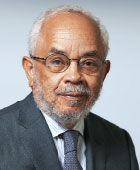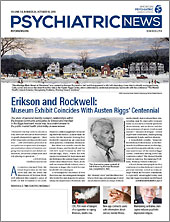Several decades have gone by since that morning when I passed him the ball. He ran into a forward position from the left wing, but diagonally, and stretched out his left arm at a slight upward slant so I could see it. Neither of us wanted to attract attention from the opposing team. He couldn’t verbally ask for the ball anyway, as he couldn’t speak. I didn’t say anything because he couldn’t hear. As he turned to straighten his position toward the goal, I kicked the ball to his right with what soccer aficionados call a perfectly weighted pass. The ball passed him with the initial speed. As he moved more quickly, and the ball slowed down, he was on track to connect with it in about 10 yards. He reached it and shot it into the net in a one-touch move. What a beauty! After the game, he came toward me. Five yards away, he stopped, clasping both hands at chest level with palms touching each other. He bowed with a grin that said thanks, and I returned the gesture. For a single special moment, I had entered the silent world of the deaf.
That distant memory came back to me as I entered the Pantheon in Paris this summer to visit the exposition “L’Histoire Silencieuse des Sourds” (“The Silent History of the Deaf”). The displays recounted a brief history of the deaf in France with occasional allusions to what had taken place in the United States. At first, I found “silent” in the title puzzling. However, as I proceeded with the visit, things got clearer. In some cases, a child’s deafness is picked up very late by the family, and the youngster never develops speech and other communication skills. Thus, the child remains isolated in a uniquely silent community. I’ve also noticed how some older folk, losing their capacity to hear, avoid seeking medical help to adapt to the incipient disability. The result is progressive isolation in an environment of decreasing social interaction and increasing silence. The exposition’s title also invites reflection on the world of silence inhabited by many of those suffering from severe mental and other chronic illnesses and those in extreme environments such as the segregated units of prisons. At first, the retreat may be comforting. But soon, the deterioration of important social and cognitive skills becomes a problem.
The exposition shone a light on my ignorance. I was not fluent in the theoretical connections between the sign language used by the deaf and mechanisms developed by monks of the Middle Ages who lived in silence. I was embarrassed that as a forensic psychiatrist I had never heard of the late-18th century French case of Madeleine Le Mansois (1750-1826). At the time, she appealed to the highest court in the land to overturn a lower court ruling that had stopped her from marrying the man of her choice because of her disability. She won the case, aiding in the development of the concept of “free consent” with regard to matrimony, so long as a woman could make her preference clear. At least I had heard of the advocacy movement that the exposition had termed “deaf militancy.” The movement focused on a language for the deaf that would help them acquire skills for social, intellectual, and cultural situations.
I have spent a substantial part of my professional life fighting on behalf of disadvantaged groups. But, partly because of their small numbers in the system, a fraction of that time has involved representation of those who cannot hear. I recalled how difficult it had been for me to obtain optimal psychiatric care for several hospitalized patients with severe hearing impairment. I had to represent their needs formally to the administration and insist that outside experts be hired to carry out specialized assessments and provide care. In my experience, many caregivers lack the requisite training. Few of my colleagues have mastered the art of signing and immersed themselves in the culture of the deaf.
I shall remember the scene at the Pantheon’s exposition. Individuals with hearing impairments were well represented, visible by their vigorous signing to each other, obviously discussing the salient points of each presentation. Their relaxed appearance said they felt they belonged there—and indeed they did. They were signifying and celebrating, proud that curators wanted to feature historic contributions to the culture of the deaf. ■

